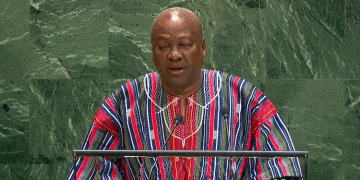Why the IEA Reinstated Its “Business as Usual” Scenario
A great debate is unfolding about the subjectivity of data in producing the energy outlooks that guide public policy and private spending, shaping the future of the global energy sector. The International Energy Agency has been caught in the crossfire of a partisan debate in which environmental and energy industry leaders vehemently disagree about what constitutes accuracy, truth, and good science in data, and particularly in the agency’s flagship World Energy Outlook report. And this year, the fossil fuels industry is getting its way.
It’s easy to forget that data is not objective, nor is it purely subjective. This false dichotomy, according to data expert Melanie Feinberg, “distorts the empirical realities of data collection, the challenging work of forcing unruly phenomena to speak in clean, distinct, ideally quantitative phrases.” Instead, good science is about recognizing the responsibility of being an active decision-maker to produce methods and outputs that most accurately represent complex realities.
Human-led decisions and difficult choices are being made at every step of developing a report like the International Energy Agency (IEA)’s annual World Energy Outlook – from how to collect and clean the data to how to analyze and report on it. One of those critical choices is how the agency chooses to construct its projected scenarios for the clean energy transition and the phaseout of fossil fuels.
The choice that has recently come under scrutiny is whether to include a “Current Policies Scenario” along with the typical scenarios that the agency uses to make its forecasts. The IEA based its “business as usual” outlooks on current policies until 2019, when the agency decided to switch to a “Stated Policies Scenario,” which it believed to be more accurate. The difference is that the Stated Policies Scenario assumes certain future policy actions, such as the extension and renewal of policies with end dates.
As an example, before the Inflation Reduction Act, the United States implemented solar and wind power tax credits that expired every few years, at which point they would be reviewed and adjusted as needed. A Current Policies Scenario only includes the policy as written, meaning that the scenario assumes those tax credits would end, since their (likely) renewal wasn’t in writing. A Stated Policy Scenario assumes, on the basis of policy analysis and stated aims, that the tax credits would be renewed. The argument is that while this is not based on concrete policy, it is a more accurate representation of policy – and ultimately a more accurate projection.
This change in modeling has resulted in projections that foresee a much more rapidly approaching peak fossil fuel demand. This change has yielded some harsh critiques, especially from Republican leadership. Robert McNally, president of research and analysis firm Rapidan Energy and former energy advisor for President George W. Bush, wrote an op-ed earlier this year slamming the IEA for being “neutered” by “climate politics.” McNally wrote for the Wall Street Journal that the EIA’s energy modeling is posing “significant risks” to global energy systems by encouraging underinvestment in oil and gas, thereby undermining “its vital security mission.”
The Trump administration has also been a vocal critic of the IEA, and has recently threatened to withdraw from the agency due to what it sees as “unrealistically green” forecasting. “We will do one of two things: we will reform the way the IEA operates or we will withdraw,” said Energy Secretary Chris Wright last month. “My strong preference is to reform it.”
And now we know that the IEA has yielded to this pushback. The international agency very quietly confirmed in March calendar notice that this year will mark the much-debated return of the Current Policies Scenario. The IEA statement noted that this year’s report will include a “wide spectrum of possible outcomes that today’s markets and policies imply,” encompassing “exploratory scenarios that flow from different assumptions about existing policies, including the Current Policies Scenario, as well as normative pathways that achieve energy and emissions goals in full.”
This marks a major policy reversal on the part of the agency, which had previously ardently defended its choice to drop the model. It also reflects a rapidly changing global policy environment that is more concerned with immediate-term energy security rather than long-term climate realities.








